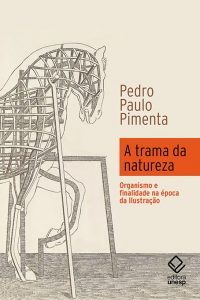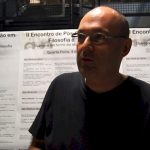Philosopher discusses the multiplicity of the concept of nature from the Enlightenment
The difficulty of defining the term in philosophy dates back to the Encyclopaedia, and is now debated from the point of view of Hume’s Empiricism and Kant’s Transcendental Philosophy

The emergence of Biology as a science in the nineteenth century was preceded by an intense and rich reflection on the laws that determine the organization of matter in specific systems – the living beings. In The design of nature: organism and purpose in the age of Enlightenment, recently published by Unesp Publishing House, Pedro Paulo Pimenta reconstitutes some fundamental moments of this history, starting from Hume’s A Treatise of human nature (1740), going through Kant’s Critique of Judgment (1790), and arriving at Darwin’s, On the Origin of Species (1859).
The essays collected in this volume address scientific questions through the prism of philosophy to demonstrate how, in the “age of Enlightenment” (or the long Eighteenth Century), philosophers and naturalists strove to define strategies and forge appropriate concepts to explain the phenomena of life in the scientific framework of the time, which was dominated by Newtonian physics. It was imperative to submit the organism to a regularity in order to know its structuring laws and to show the hierarchy of its internal functions, as well as the perpetuation of forms in the different species.
It was not an easy task, as it required the critique and refutation of doctrines dear not only to philosophers and men of science, but also to religion. This struggle led to a redefinition of what we understand by nature and experience, and opened new perspectives not only to the study of living beings but also to different forms of social organization.
There are two different series of phenomena, which thinkers of the Enlightenment considered from similar models. It is not strange to find in these pages – besides Diderot, who speculates on the machines, and Adam Smith, the prophet of spontaneous organization – the figures of Buffon, Lamarck and Cuvier, who defined the theoretical framework of Darwinism. The author himself observes that his book, if successful, “may offer something as a research plan – that can be developed and deepened in the future – on a subject that, despite its distant origins in the history of modern thought, remains current.”
The emergence of biology as a science in the nineteenth century was preceded by an intense and rich reflection on the laws that determine the organization of matter in specific systems – living beings. In The plot of nature: organism and purpose at the time of Enlightment, published by Unesp Publishing House, Pedro Paulo Pimenta reconstitutes some fundamental moments of this history, starting from Hume, whose Treatise of human nature (1740), passing through Kant, author of The Critique of Faculty to Judge (1790) and coming to Darwin, who published the Origin of Species in 1859.
The essays collected in the volume address scientific questions from the prism of philosophy, showing how, in the “epoch of Enlightenment” (or the long Eighteenth Century), philosophers and naturalists strove to define strategies and forge appropriate concepts to explain the phenomena of life in the framework of the sciences of the time, dominated by Newtonian physics. It was imperative to submit the organism to a regularity, to know its laws of structuring and to show the hierarchy of its internal functions, as well as the perpetuation of forms in the different species.
It was not an easy task, which required criticism and refutation of expensive doctrines not only to philosophers and men of science, but also to religion. This commitment led to a redefinition of what is understood by nature and experience, and opened new perspectives not only to the study of living beings but also to social organization forms.
They are two different series of phenomena, that the Enlightment thought from similar models. It is not strange to find in these pages, besides Diderot, who thinks the machines, and Adam Smith, prophet of spontaneous organization, the figures of Buffon, Lamarck and Cuvier, who defined the theoretical ground of Darwinism. The author himself observes that his text, if successful, “may offer something as a plan of research, to be developed and deepened in the future on a subject that, despite its distant origins in the history of modern thought, remains current “.
About the author

Pedro Paulo Pimenta is an Associate Professor at the Department of Philosophy of the University of São Paulo (USP). He has translated and organized several titles published by Unesp Publishing House, among them The Encyclopaedia, by Diderot and d’Alembert. He is also the author of numerous articles and books, among them Critical Imagination: Hume in the Age of Enlightenment (2013).
Title: The design of nature: organism and purpose in the age of Enlightenment
Author: Pedro Paulo Pimenta
Number of pages: 469
Format: 14 x 21 cm
ISBN: 978-85-393-0719-7
